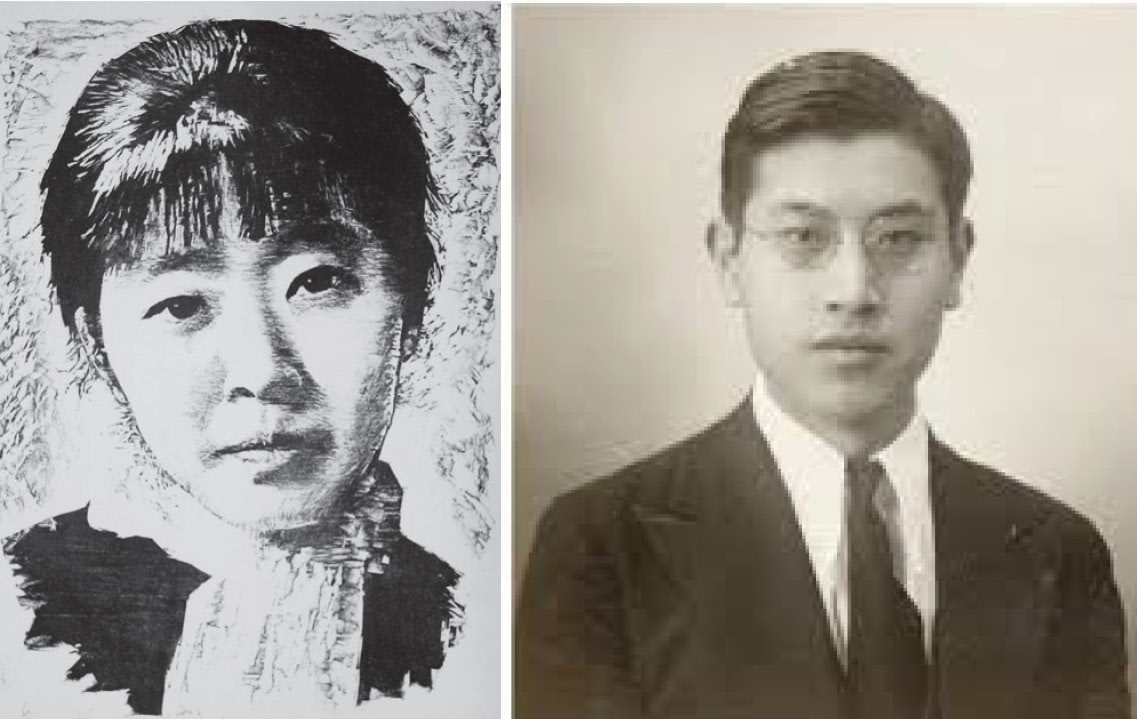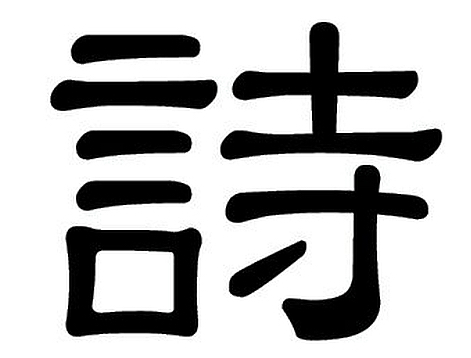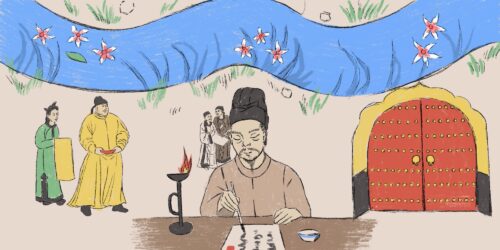Graveside poetry: Xiao Hong, Dai Wangshu, and the dead among us

April is National Poetry Month, and we’re celebrating with a series of articles that looks at Chinese poetry, both past and present. Yesterday we featured Zheng Xiaoqiong, a contemporary migrant poet. Today we turn back the clock slightly to the turmoil of the 1930s and ’40s, which produced the two poems featured below.

Drawing from her experiences of war, poverty, and illness, writer Xiao Hong/Hsiao Hung 萧红 (1911-1942; given name Zhang Naiying 张乃莹) produced acclaimed novels such as Tales of Hulan River and The Dyer’s Daughter. Less attention has been given to the dozens of starkly confessional, unornamented poems she wrote, which have long been overshadowed by her prose.
In 1937, Xiao paid a visit to late mentor and literary giant Lu Xun’s grave in Shanghai. She recorded the visit in verse, “Visiting a Grave,” blurring the lines between death and life. She greets Lu Xun as if he were still alive, making a point to deny that she’s acknowledging his ghost. She denies, too, that she’s crying for the man himself — instead, she’s crying “for righteousness.”
| 拜墓诗
跟着别人的脚迹, 我走进了墓地, 又跟着别人的脚迹, 来到了你的墓边。 那天是个半阴的天气, 你死后我第一次来拜访你。 我就在你的墓边竖了一株小小的花草, 但,并不是用以招吊你的亡灵, 只说一声:久违。 我们踏着墓畔的小草, 听到附近的石匠钻刻着墓石, 或是碑文的声音。 那一刻, 胸中的肺叶跳跃起来, 我哭着你, 不是哭你, 而是哭着正义。 你的死, 总觉得是带走了正义, 虽然正义不能被人带走。 我们走出了墓门, 那送着我们的仍是铁砧击打着石头的声音, 我不敢去问那石匠, 将来他为着你刻成怎样的碑文? |
Visiting a Grave
Following the footsteps of others, I entered the cemetery. Following the footsteps of others, I arrived at your tomb. It was a half-cloudy day, My first visit to you after your death. I placed a small stump of flowers by your grave, Not intending to beckon your ghost. My terse greeting: “It’s been a long time.” We trod on the young grass by the grave, Hearing the nearby stonemasons engrave tombstones, Or the noise of tablets being inscribed. In that moment, My lungs leapt within my chest. I cried for you — Not for you, I cried for righteousness. When you died, It seemed that you had taken righteousness with you, Even though righteousness isn’t anyone’s to take. We left the cemetery, Sent off by the continued sounding of anvils on rock. I didn’t dare ask the stonemasons: What will they carve on your tablet? |
Ambiguous “others” — whose footsteps Xiao follows — lurk in the verse. Are they the footsteps of previous visitors, or of the dead themselves who are buried in the cemetery? Xiao enters the graveyard alone, calling herself “I” (我 wǒ). But by the third stanza, she’s part of a “we” (我们 wǒmen), and she exits the cemetery with her unnamed companion.
Time itself, as experienced by the living poet, is compared to the inscriptions that nearby stonemasons are engraving into fresh tombstones. Kè (刻) in Chinese can mean both “carve” and “moment,” and Xiao uses that character in both its senses here, drawing a parallel between the passage of one’s lifetime and the progress of a mason’s work as he sets into stone summaries of lives that have already ended.
In Xiao’s other work, the dead are also portrayed as very much still among the living, and the boundary between their worlds is a fragile one.
In the 1935 novel The Field of Life and Death (生死场 shēngsǐ chǎng), which details the ugliness of rural life in early 20th-century China, villager Mother Wang drinks poison after hearing that her son has died. Her neighbors find out and begin digging a grave for Wang, but she takes so long to die that her husband decides to take matters into his own hands and crushes her stomach with a pole. The villagers place Wang in a coffin and hold a funeral for her — but then she wakes up in her grave, thirsty and cold. Elsewhere in the novel, midwives attend to births described in grisly detail, and the reader is always reminded that mother and child are as close to death as they are to new life.
In Market Street (商市街 shāng shìjiē), an autobiographical account published in 1936 about Xiao’s last years in Harbin, abject poverty and the bitter northeastern winter have given the living the cold stiffness of the dead, while they try to preserve the dead in poses of the living. Sparrows are “frozen to death on telephone wires… still perched on the wires,” while some protagonists are compared to “legendary people awaiting their transformation into immortals, cultivating themselves by enduring hardships” (Howard Goldblatt’s translation).
Xiao died of illness at the age of 30 in Japanese-occupied Hong Kong, spending her last hours at a makeshift hospital on the grounds of St. Stephen’s Girls’ College. She was initially buried in Repulse Bay, although some of her remains were moved to Guangzhou in the 1950s.
In 1944, symbolist poet and friend of Xiao Hong’s, Dai Wangshu 戴望舒 (Tai Van-chou), wrote a graveside ode of his own, dedicated to Xiao:
萧红墓畔口占 Impromptu Verse by Xiao Hong’s Grave
走六小时寂寞的长途,
zǒu liù xiǎoshí jìmò de chángtú,
到你头边放一束红山茶,
dào nǐ tóu biān fàng yī shù hóng shān chá,
我等待着,长夜漫漫,
wǒ děngdàizhuó, chángyè mànmàn,
你却卧听着海涛闲话。
nǐ què wò tīngzhe hǎi tāo xiánhuà.
Walking six lonely hours across a great distance,
I arrived to place red camellias by your head.
I waited through an endless night of suffering,
Yet you still lay there, listening to the chatter of the waves.
Dai, writing a year before Japan’s surrender, imagines that Xiao Hong has been lulled to sleep by the crashing of the waves at Repulse Bay. The gesture of placing a sparse bouquet by a grave echoes Xiao’s own gesture in her tribute to Lu Xun, which Dai is likely to have read. His journey to Xiao’s grave has been a “lonely,” “endless night.” The Chinese idiom he uses here, 长夜漫漫 (chángyè mànmàn), refers to a long period of suffering, but its literal meaning, of unending darkness, could very well be a description of death.
The long years of war, which saw Dai endure torture and deteriorating health in a prison in Hong Kong, have led him to this grave by the sea. Death would come to Dai only a few years later, in 1950.
We’re celebrating National Poetry Month by looking at Chinese poetry, past and present. Follow our series here.





